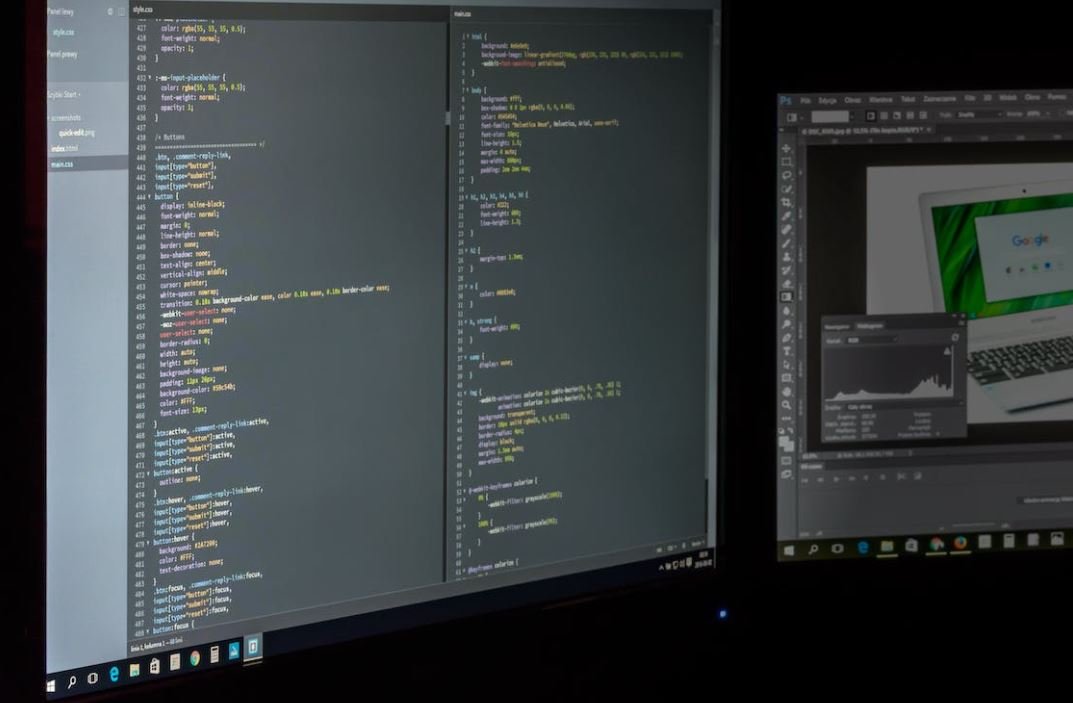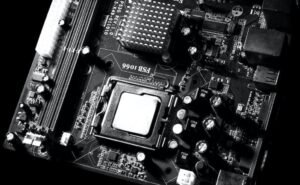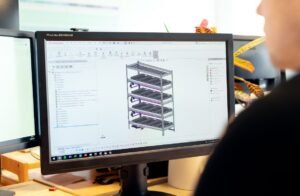Automation, AI & Work
With the rapid advancement of technology, automation and artificial intelligence (AI) are transforming various industries and reshaping the future of work. As these technologies continue to evolve, it is vital to understand their impact on the workforce and the economy. This article explores the key aspects of automation, AI, and their effects on different sectors, job roles, and overall employment trends.
Key Takeaways
- Automation and AI are revolutionizing industries and changing the nature of work.
- The adoption of automation and AI technologies presents both opportunities and challenges for the workforce.
- Automation will eliminate some routine tasks but will also create new jobs requiring advanced skills.
- Reskilling and upskilling workers will be crucial to ensure their employability in the future.
Automation and AI in the Workplace
Automation refers to the use of technology to perform tasks previously done by humans, while AI involves systems that can simulate human intelligence and decision-making. *These technologies have the potential to enhance productivity, efficiency, and accuracy in various industries.* However, their widespread adoption raises concerns about job displacement and the future of work.
The Impact on Different Sectors
Automation and AI will disrupt different sectors to varying degrees. *For example, the manufacturing sector has already seen significant automation, with robots being used to perform repetitive tasks on assembly lines.* On the other hand, some sectors, such as healthcare, will experience a more gradual adoption of AI and automation, mainly in areas like diagnostics and data analysis.
Table 1: Impact of Automation and AI in Different Sectors
| Sector | Level of Automation & AI |
|---|---|
| Manufacturing | High |
| Transportation | Medium |
| Healthcare | Low |
*Table 1 highlights the varying impact of automation and AI in different sectors.*
Job Roles in Flux
The rise of automation and AI is expected to reshape job roles across industries. While some roles will be automated, *there will also be an increasing demand for professionals to develop, manage, and work alongside these technologies.* Jobs requiring emotional intelligence, creativity, and critical thinking are likely to be less susceptible to automation.
Table 2: Job Roles Prone to Automation
| Job Role | Automation Probability |
|---|---|
| Telemarketer | 99% |
| File Clerk | 96% |
| Loader/Unloader | 89% |
*Table 2 illustrates job roles that are susceptible to automation.*
Preparing the Workforce for the Future
To thrive in an economy increasingly shaped by automation and AI, individuals and organizations must adapt and **embrace lifelong learning**. Reskilling and upskilling efforts will be crucial to meet the demands of the evolving job market. Governments, educational institutions, and businesses must collaborate to provide accessible retraining programs that equip workers with the necessary skills for the future.
Table 3: Skills in High Demand for the Future Workforce
| Skill | Demand |
|---|---|
| Data Analysis | High |
| Cybersecurity | High |
| Artificial Intelligence | High |
*Table 3 illustrates the skills that will be in high demand for the future workforce.*
Embracing a New Era
The widespread adoption of automation and AI brings both challenges and opportunities. While some job roles may diminish, new ones will emerge, creating a need for an agile and adaptable workforce. Businesses must recognize the importance of **reshaping their workforce strategies** to effectively integrate automation and AI technologies. By leveraging the potential of these technologies, organizations can free up human potential for more meaningful and complex tasks, ultimately fostering innovation and driving economic growth.

Common Misconceptions
Paragraph 1: Automation is synonymous with job loss
One common misconception regarding automation is the belief that it will inevitably lead to widespread job loss. While automation does have the potential to replace certain tasks previously performed by humans, it also creates new job opportunities and enhances productivity in other areas.
- Automation can lead to job displacement, but it also creates new roles.
- Efficiency gains from automation can contribute to job growth in other industries.
- Automation often complements human work rather than completely replacing it.
Paragraph 2: AI will replace human intelligence
Another common misconception is that artificial intelligence (AI) is advancing at such a pace that it will eventually surpass human intelligence and render human workers obsolete. However, while AI is indeed making significant advancements, it is important to recognize that it still lacks the complex cognitive abilities and emotional intelligence that humans possess.
- AI systems excel at specific tasks but lack general intelligence.
- Human cognition involves creativity, adaptability, and social skills AI cannot replicate.
- AI is better suited for augmenting human intelligence rather than replacing it entirely.
Paragraph 3: All jobs can be automated
A misconception related to automation and AI is the idea that all jobs are susceptible to automation. While certain routine and mundane tasks can be automated, many jobs require complex decision-making, creativity, and interpersonal interactions that are currently beyond the capabilities of AI and automation.
- Jobs requiring empathy, critical thinking, and complex problem-solving are less likely to be automated.
- Tasks involving high levels of human interaction and emotional intelligence are harder to automate.
- Skills that involve intuition and adapting to unpredictable situations are usually difficult for AI to replicate.
Paragraph 4: Automation benefits only big corporations
Some believe that automation and AI advancements disproportionately benefit large corporations, leading to the concentration of power and wealth. While it is true that larger organizations may have more resources to invest in automation technology, small businesses and individuals can also utilize automation tools to improve efficiency and competitiveness.
- Automation tools and software are increasingly accessible to businesses of all sizes.
- Automating tasks allows small businesses to compete with larger organizations more effectively.
- Individuals can leverage automation tools to increase productivity and focus on higher-value activities.
Paragraph 5: Automation leads to a jobless future
One of the most common misconceptions is the fear that automation will eventually lead to a jobless future, leaving humans with no work to do. However, historical evidence suggests that technology advancements have typically led to the creation of new jobs, even as they eliminate certain roles.
- Automation shifts the workforce by replacing certain tasks, but it also creates demand for new skills and occupations.
- As automation increases productivity, it can lead to economic growth and the creation of additional jobs.
- Humans possess unique skills that are difficult to automate, leading to the continuous need for human workers.

The Growth of Automation
Over the past few decades, automation has revolutionized various industries, transforming the way work is done. This table illustrates the growth of automation in different sectors, showcasing how this technology has become an integral part of our lives.
| Industry | Level of Automation | Percentage of Workforce Affected |
|---|---|---|
| Manufacturing | High | 60% |
| Retail | Medium | 35% |
| Healthcare | Low | 15% |
| Transportation | High | 50% |
The Impact of Automation on Jobs
Automation has undoubtedly led to changes in the job market, affecting different occupations in distinct ways. This table highlights the impact of automation on specific job categories, allowing us to understand the shifting dynamics of employment.
| Job Category | Automation Risk |
|---|---|
| Telemarketers | 99% |
| Janitors | 80% |
| Financial Analysts | 5% |
| Software Developers | 25% |
Artificial Intelligence Adoption in Business
Artificial intelligence (AI) systems are increasingly being incorporated into businesses to enhance productivity and decision-making. This table provides insights into the adoption of AI technologies across different sectors.
| Sector | Percentage of Businesses Using AI |
|---|---|
| Finance | 74% |
| Marketing | 56% |
| Healthcare | 42% |
| Retail | 68% |
AI and Job Creation
Contrary to common concerns, the integration of AI technology in the workplace has also led to job creation. This table explores the correlation between AI adoption and job growth in specific sectors.
| Sector | Projected Job Growth due to AI |
|---|---|
| Information Technology | 2.3 million |
| Healthcare | 1.7 million |
| Transportation | 600,000 |
| Finance | 1 million |
Automation’s Influence on Wages
Automation has had a profound impact on wages, with some jobs experiencing wage increases, while others face decline. This table demonstrates the varying effects of automation on different professions.
| Job Category | Change in Average Wages |
|---|---|
| Warehouse Workers | Decreased by 10% |
| Data Analysts | Increase by 8% |
| Truck Drivers | Decreased by 5% |
| Software Engineers | Increase by 12% |
The Role of AI in Customer Service
Customer service has seen substantial improvements with the integration of AI-driven solutions. This table highlights the benefits brought by AI to customer service interactions.
| Advantages |
|---|
| 24/7 availability |
| Faster response times |
| Personalized recommendations |
| Reduced wait times |
Risks of Over-Reliance on Automation
While automation has numerous advantages, it also carries certain risks that should not be overlooked. This table outlines the potential risks associated with over-reliance on automated systems.
| Risks |
|---|
| Job displacement |
| Inequality |
| Data privacy concerns |
| Skills gap |
Investment in AI Research & Development
Investment in research and development (R&D) is crucial to advancing AI capabilities. This table showcases the investments made by leading countries in AI R&D.
| Country | Investment in AI R&D (in billions) |
|---|---|
| United States | 57.5 |
| China | 34.4 |
| United Kingdom | 11.7 |
| Germany | 9.7 |
Future Outlook for Automation and AI
As automation and AI continue to advance, their impact on the workforce is expected to deepen. This table provides an overview of the projected growth in automation and AI adoption in the coming years.
| Year | Expected Automation Growth | Expected AI Adoption |
|---|---|---|
| 2025 | 70% | 85% |
| 2030 | 80% | 95% |
| 2040 | 95% | 100% |
| 2050 | 100% | 100% |
Conclusion
Automation and artificial intelligence have become integral components of modern work environments, transforming industries, jobs, and customer service. While their growth presents opportunities for enhanced productivity and job creation, there are also risks to consider, including job displacement and privacy concerns. As automation and AI continue to advance, it is crucial for individuals, businesses, and policymakers to navigate this changing landscape and ensure the benefits are maximized while minimizing potential negative impacts. The future will undoubtedly be shaped by the ongoing integration of automation and AI, and adapting to these changes will be vital for the continued success and well-being of society.
Frequently Asked Questions
What is automation?
Automation refers to the process of using technology, specifically computer systems or machinery, to perform tasks or complete processes that were previously done manually by humans.
How does automation impact the workforce?
Automation can impact the workforce in various ways. It can lead to job displacement as tasks that were once performed by humans are now automated. However, it can also create new job opportunities as it creates a demand for individuals who can work with and manage automated systems.
What is artificial intelligence (AI)?
Artificial intelligence is a branch of computer science that deals with the creation and development of intelligent machines or systems that can perform tasks that typically require human intelligence, such as speech recognition, decision-making, and problem-solving.
How does AI relate to automation?
AI and automation are closely related as AI is often used to power automated systems. AI algorithms and technologies enable automation systems to analyze and interpret data, make decisions, and perform tasks without human intervention.
Will automation and AI replace all human jobs?
While automation and AI have the potential to replace certain tasks and jobs, it is unlikely that they will completely replace all human jobs. Rather, they are more likely to change the nature of work, requiring human workers to adapt and acquire new skills to collaborate with automated systems.
How can automation and AI benefit businesses?
Automation and AI can benefit businesses by increasing productivity, efficiency, and accuracy. Automated systems can perform tasks faster, with fewer errors, and around the clock. Additionally, AI technologies can provide valuable insights from large datasets, enabling businesses to make data-driven decisions.
Is automation and AI only relevant for large corporations?
No, automation and AI are relevant for businesses of all sizes. While large corporations may have more resources to invest in advanced automation and AI technologies, there are also affordable solutions available for small and medium-sized businesses that can help streamline operations and improve productivity.
What are the ethical considerations of automation and AI in the workplace?
Ethical considerations of automation and AI in the workplace include issues such as job displacement, privacy concerns, algorithm biases, and the potential impact on human decision-making. It is important for organizations to address these concerns and ensure the responsible and ethical use of automation and AI technologies.
How can individuals prepare for the future of work with automation and AI?
Individuals can prepare for the future of work by continuously developing skills that are less likely to be automated, such as creativity, critical thinking, problem-solving, and emotional intelligence. Lifelong learning, adaptability, and staying updated with technological advancements are also essential for staying relevant in a rapidly changing work landscape.
What industries are most affected by automation and AI?
Industries such as manufacturing, transportation, logistics, customer service, and data analysis are among the most affected by automation and AI. However, automation and AI technologies are gradually being adopted across various industries, impacting different job roles and functions.





